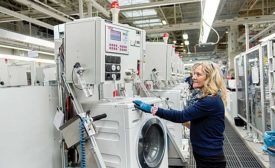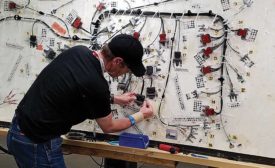Home » Keywords: » harness assembly
Items Tagged with 'harness assembly'
ARTICLES
Cost Reduction in Wire Harness Assembly
Experience, foresight and a reliable enterprise resource planning (ERP) system are the keys to cutting expenses throughout the wire harness assembly process.
June 15, 2021
Case Studies in Wire Harness Assembly
These success stories highlight the need to use the latest processing equipment, workbenches and testing systems on the shop floor.
October 11, 2018
Harness Assembly Goes Digital
A new, interactive harness assembly board promises to prevent errors and improve productivity.
April 16, 2018
Robotic System Assembles Cords
A unique multistation automated assembly system produces six different cord sets.
April 13, 2018
Sealing Crimped Contacts Avoids Corrosion
Miele uses a dual-curing adhesive to seal electrical contacts in its washing machine motors.
January 16, 2018
Quality Is Top Priority When Assembling Wire Harnesses for Medical Devices
Successful contract manufacturers focus first on quality when making wire harnesses and cable assemblies for medical devices.
January 15, 2018
Never miss the latest news and trends driving the manufacturing industry
Stay in the know on the latest assembly trends.
JOIN TODAY!Copyright ©2025. All Rights Reserved BNP Media.
Design, CMS, Hosting & Web Development :: ePublishing











